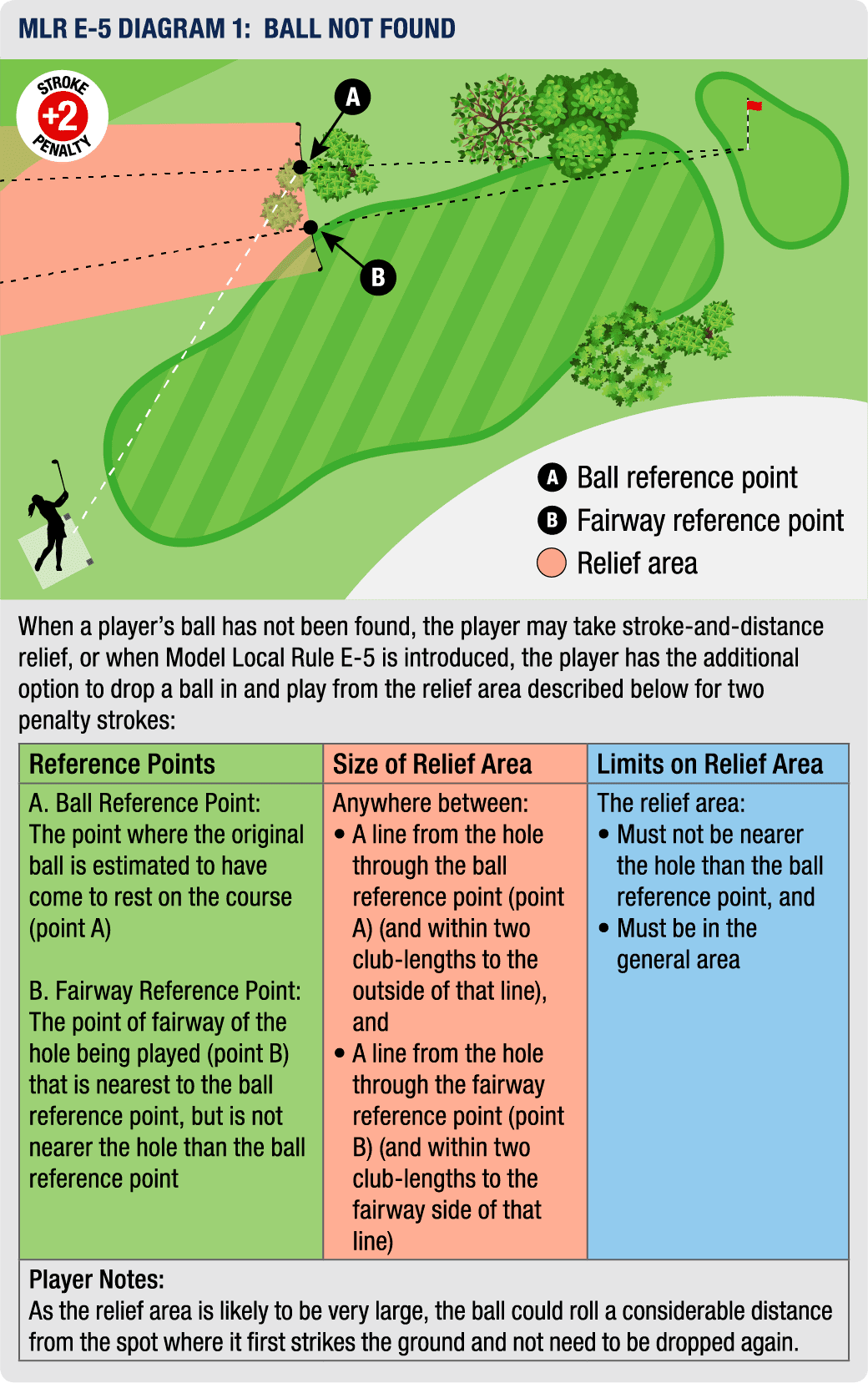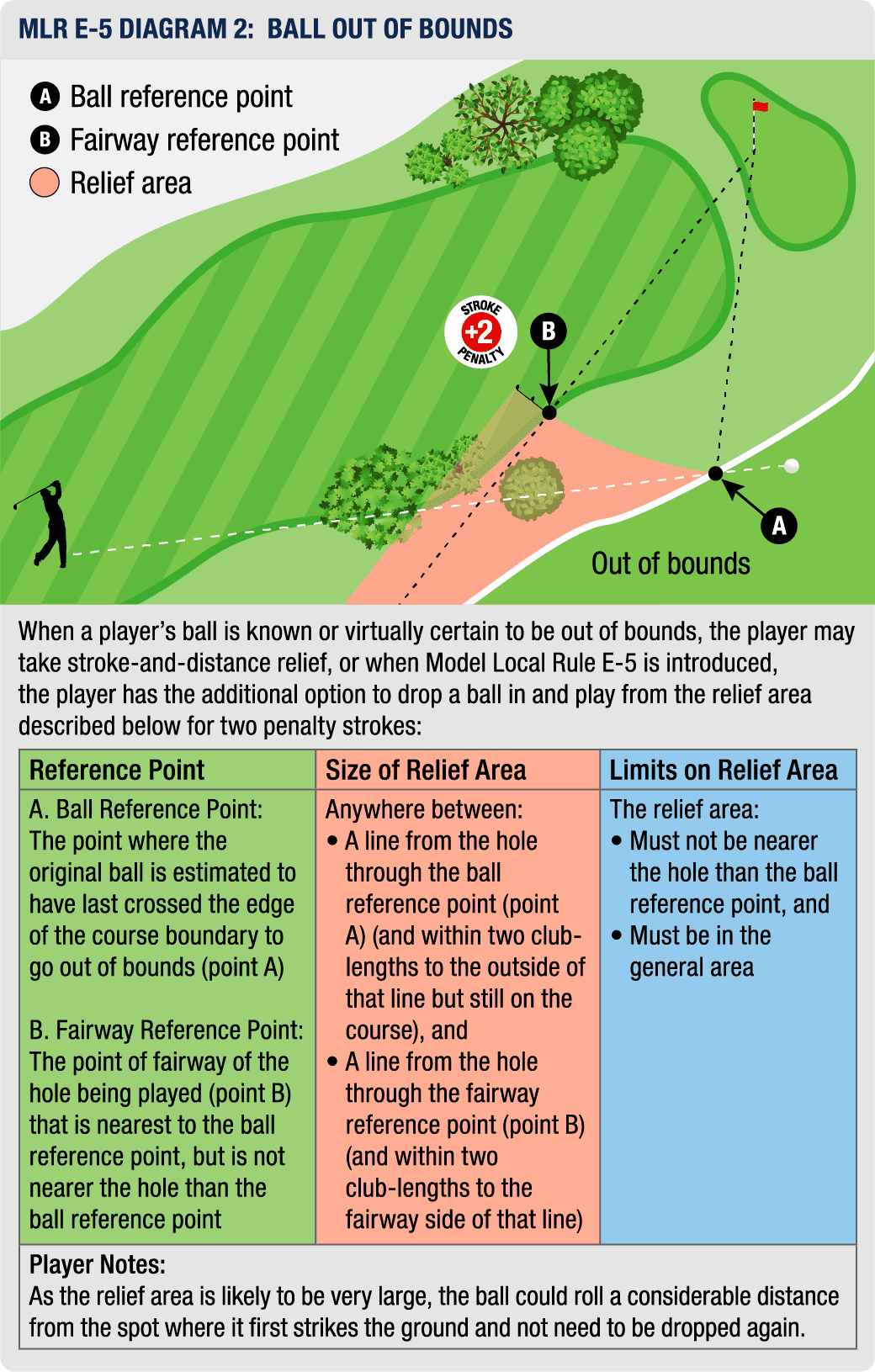- Out of bounds. Grounds outside the club boundaries.
- If a staked shrub or tree interferes with a player’s stance or the area of their intended swing, the player MUST take relief as provided in Rule 16-1b.
- All stakes and guards supporting trees or shrubs, stakes defining GUR and all coloured distance markers are immovable obstructions. If any of these interferes with a player’s stance, the area of their intended swing or the player is within 2 club lengths on the line of play, the player MUST take relief as provided for under Rule 16-1b.
- The artificial surfaces and sides of roads and paths are obstructions. The player may take relief without penalty as provided for under Rule 16-1b.
However, dirt roads are an integral part of the course and as such no relief is permitted from those. - In regards to the embedded ball rule: The sandy like soil in the General Area is not deemed to be “Sand” when applying this rule. Therefore, when a ball is embedded anywhere in the General Area the player may take relief without penalty as provided for under Rule 16-3b. A reminder that the ball must be embedded in its own pitch mark made as a result of the player’s previous stroke and part of the ball must be below the level of the ground (this does not include embedded in loose impediments such as sticks or pine needles).
- If a sprinkler head on or within two clubs of the putting green of the hole being played intervenes on the line of play, the player may take relief without penalty as follows: if the ball lies off the putting green and not in a bunker or penalty area and is within two club lengths of the intervening obstruction, it may be lifted, cleaned and dropped at the nearest point of relief to where the ball lay (a) not nearer the hole (b) avoids such intervention and (c) is not in a bunker or penalty area or on the putting green.
- Mud rule: Any ball lying on a closely mown area, with mud adhering to it, may be lifted, cleaned and replaced without penalty. Before lifting the ball, the player must mark its position.
- If the players ball lies through the green and a “Big Hole Golf Cover” on the putting green interferes with the players line of play, line of sight or intended shot, it may be lifted, cleaned and dropped at the nearest point of relief to where the ball lay (a) not nearer the hole (b) avoids such intervention and (c) is not in a bunker or penalty area or on the putting green.
- GUR
” All sanded areas on the fairway in the hole of play are GUR. (This does not include sand filled divots).
” If a ball is resting on a bare patch on the green or a bare patch is in the line of play, the player may take relief without penalty by placing the ball at the nearest point of relief no closer to the hole.
” Note that the blue stake and posts such as those on the right-hand side of the tenth fairway denote GUR. - A Player may elect to use the Stroke & Distance Local Rule
When a players ball has not been found (lost) or is known or virtually certain to be out of bounds, the player may proceed under the Stroke & Distance Local Rule by dropping the original ball or another ball in the relief area for a penalty of two strokes, rather than proceeding under stroke and distance. This Local Rule is not available if a provisional ball has been played.
For full details refer to diagrams below
Stroke & Distance Local Rule
When a player’s ball has not been found (lost) or is known or virtually certain to be out of bounds, the player may proceed under the Stroke & Distance Local Rule by dropping the original ball or another ball in the relief area for a penalty of two strokes, rather than proceeding under stroke and distance. This Local Rule is not available if a provisional ball has been played.
The ball reference point is:
Lost Ball: The point where the original ball is estimated to have come to rest on the course.
or
Out of Bounds: The point where the original ball is estimated to have last crossed the edge of the course boundary to go out of bounds (not where the ball comes to rest).
The fairway reference point for both a lost ball or out of bounds is:
The point of the fairway of the hole being played that is nearest to the ball reference point, but is not nearer the hole than the ball reference point.
The relief area is anywhere between:
a line from the hole through the ball reference point (and within two club lengths to the outside of that line)
and
a line from the hole through the fairway reference point (and within two club lengths to the fairway side of that line).

